Note: This article may contain affiliate links, which means if you make a purchase following our links won’t cost you extra, but we may earn a commission. Learn more
When it comes to having a fire in your fire pit, the type of fuel you use is very important. Not all fuels are created equal and some will produce more heat than others. In order to get the most efficient heat from your fire pit, it’s important to use the right fuel.
There are a few different types of fuel that can be used in a fire pit. The most common type of fuel is wood. Wood is a great option because it’s easy to find and it’s also very effective at producing heat. Another option is charcoal. Charcoal is a great option if you want to get a lot of heat from your fire pit. However, it can be a bit more difficult to find than wood.
If you’re looking for the most efficient heat possible, you should use propane. Propane is a very effective fuel and it will produce a lot of heat. However, it can be a bit more expensive than other options.
However, each fuel has its own characteristic, which is a measure of its efficiency. You can’t burn all types of wood even if you wanted to. Also, not all types of wood will give you full fire or heat in all conditions, such as Kiln Dried Logs. If it is green you will not get enough heat, rather will get smoke.
What to Burn in a Fire Pit?
When it’s chilly outside and you want to enjoy the outdoors without freezing, sitting around a fire pit is the perfect solution. But what do you burn in a fire pit? Wood is the obvious answer, but not all types of wood are created equal when it comes to fire pits.
There are a few things you need to take into account when picking out what to burn in your fire pit. The first is the type of wood. There are two main types of wood: hardwoods and softwoods. Hardwoods, like oak and maple, are denser and will burn for a longer period of time. They also produce more heat and are less likely to spark. Softwoods, like pine and cedar, burn more quickly but are also more likely to spark.
The second thing to consider is the moisture content of the wood. Wet wood will not only produce less heat, but it can also cause your fire to smoke. If you can, try to find wood that has been cut and left to dry for at least six months.
Now that you know what to look for, here are some of the best woods to burn in your fire pit.
Oak: Oak is one of the most popular woods to burn in a fire pit. It’s a hardwood that burns slowly and produces a lot of heat. Oak is also less likely to spark than other types of wood.
Pinion wood: Pinion wood is a great wood to burn in a fire pit because it is a hardwood that burns slowly and evenly. This type of wood is also less likely to spark and produce smoke, making it a safer and more pleasant option for backyard fires. This wood is familiar with a mosquito repellent.
Wood Pellets: Wood pellets have a lot of benefits that make them ideal for use in a fire pit. For one, they are a renewable resource. Unlike fossil fuels, wood pellets can be replenished. They also produce less pollution when burned.
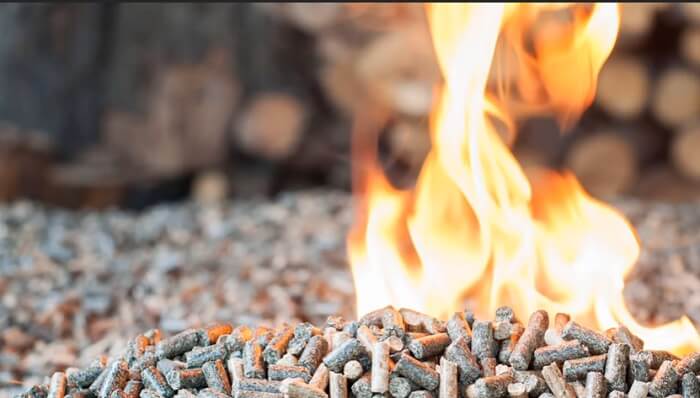
Another benefit of wood pellets is that they are very efficient. They produce more heat per pound than other common fuels like wood or coal. This means that you can get more heat out of your fire pit while using less fuel.
Wood pellets are also easy to store and transport. They are typically sold in bags that can be easily carried to your fire pit.
Maple: Like oak, maple is a hardwood that burns slowly and produces a lot of heat. It’s a good choice for a fire pit because it’s less likely to spark than softer woods.
Cherry: Cherry is another hardwood that’s good for fire pits. It burns slowly and produces moderate heat. Cherry wood is also known for its pleasant smell.
Mesquite: Mesquite is one of the best woods to burn in a fire pit. The wood is extremely dense, which means it will last longer and produce more heat than other types of wood. Mesquite also has a high sugar content, which makes it ideal for creating a hot, intense fire.
Birch: Birch is a hardwood that burns quickly and produces a lot of heat. It’s a good choice for a fire pit if you want a quick, hot fire, but it doesn’t last as long as some of the other options.
Alder: Alder is a good wood to burn in a fire pit because it produces a lot of heat and has a high ignition temperature. This means that it will take longer for the wood to catch fire, but once it does, it will burn hotter and produce more flames. Alder is also a good choice for a fire pit because it doesn’t produce a lot of smoke.
Hickory: Hickory is a hardwood that burns hot and slow. It’s a great choice for a long-lasting fire since it burns slowly and evenly. Also, it’s a good choice for a fire pit because it’s less likely to spark than other woods.
Pecan: Pecan is good to burn in a fire pit because it is a hardwood that burns hot and slow. This makes it perfect for creating a long-lasting, steady fire that will keep you warm all night long, and it smells good.
Ash: Ash is a hardwood that burns slowly and produces a moderate amount of heat. Like hickory, it’s a good choice for a long-lasting fire. It’s also a good choice for a fire pit because it’s less likely to spark than other woods.
Wood Bricks: Burning wood bricks in your fire pit is a great way to reduce your carbon footprint and do your part to protect the environment. In addition to being eco-friendly, wood bricks are also longer-lasting and more efficient than conventional wood logs. They produce less ash and smoke, and you’ll get more heat from burning wood bricks than you would from burning the same amount of wood logs.
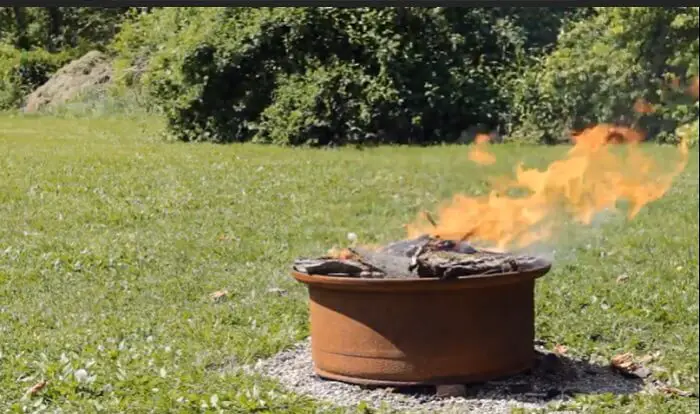
What Can’t Be Burned in the Pit?
We all love to gather around a roaring fire on a cool evening, but there are some things that just shouldn’t be burned in a fire pit. Here are 10 things that should never go into your fire pit:
1. Plastic: This is a big no-no, as burning plastic releases harmful toxins and chemicals into the air.

2. Paper: While the burning paper is technically okay, it’s not the best idea. Paper burns quickly and can create a lot of ash.
3. Styrofoam: Like plastic, burning Styrofoam releases harmful toxins into the air.
4. Wet wood: Wet wood doesn’t burn well and can create a lot of smoke.
5. Treated wood: Treated wood should never be burned, as the chemicals used to treat the wood can be released into the air when burned.
6. Garbage: Burning garbage is a bad idea for the same reason as burning paper – it creates a lot of ash.
7. Chemicals: Chemicals should never be burned, as they can release harmful toxins into the air.
8. Gasoline: Gasoline is highly flammable and can explode if it comes into contact with a spark or open flame.
9. Paint: Like many chemicals, burning paint can release harmful toxins into the air.
10. Explosives: Obviously, explosives should never be burned, as they can be very dangerous.
Can You Burn Coal in a Fire Pit?
As the weather gets colder, people love to gather around a fire pit to keep warm. But you can use smokeless briquettes. They are designed to burn in all types of fires. Here are some reasons why you shouldn’t burn coal in a fire pit:
1. Coal produces a lot of smoke: When you burn coal, it produces a lot of smoke. This smoke contains harmful chemicals that can be released into the air, which can be dangerous for you and your family to breathe in.
2. Coal can produce sparks: Another danger of burning coal in a fire pit is that it can produce sparks. These sparks can easily ignite any nearby combustible materials, such as wood, leaves, or even your clothes. This can lead to a dangerous fire that could quickly spread out of control.
3. Coal can be hard to extinguish: Once you get a fire going with coal, it can be hard to extinguish. This is because coal continues to burn for a long time after you stop feeding it oxygen. This means that if you leave your fire pit unattended, it could continue to burn long after you’ve gone to bed, which could lead to a house fire.
4. Burning coal is bad for the environment: Burning coal is one of the major sources of air pollution. This pollution can lead to respiratory problems, such as asthma, and can even contribute to global warming.
5. Coal is a non-renewable resource: Coal is a non-renewable resource, meaning that it will eventually run out. Burning coal in a fire pit is not a sustainable practice. There are many other fuel sources that are renewable and more environmentally friendly.
6. Burning coal can be dangerous: Burning coal can release harmful chemicals into the air. These chemicals can cause respiratory problems, and long-term exposure can even lead to cancer. If you must burn coal, be sure to do so in a well-ventilated area.
These are just a few of the reasons why you shouldn’t burn coal in a fire pit. There are many other fuel sources that are more environmentally friendly and less dangerous. When choosing what to burn in your fire pit, be sure to consider all of your options.
What to Burn in Fire Pit Without Smoke?
1. Choose the right wood: The type of wood you use in your fire pit will greatly impact how much smoke it produces. Hardwoods like oak, hickory, and maple will create more smoke than softer woods like pine or cedar.
2. Season the wood: If you’re using fresh-cut wood, it’s important to season it first. Seasoning the wood helps to remove any moisture that could cause it to produce more smoke.
3. Avoid softwoods: When it comes to choosing wood for your fire pit, it is important to avoid softwoods. Softwoods produce more smoke and sparks than hardwoods, which can be a nuisance (and even dangerous) when trying to enjoy a smokeless fire pit. Hardwoods, on the other hand, burn more slowly and evenly, providing a better overall experience.
4. Use a fire starter: Using a fire starter will help to get your fire going quickly and smokelessly. You can find fire starters at most hardware stores.
5. Build a teepee fire: When you’re ready to start your fire, build it in the shape of a teepee. This will help the fire to burn more evenly and produce less smoke.
6. Avoid green wood: Green wood is wood that has not had a chance to properly dry and cure. This type of wood will produce a lot of smoke when burned, which can be a nuisance for you and your guests.
7. Use a fan: If you have a fan, you can use it to help direct the smoke up and away from your fire pit. This will help to keep the smoke from bothering you or your guests.
8. Don’t overdo it: If you find that your fire pit is still producing too much smoke, it’s probably because you’re adding too much wood. Try to only add a few pieces at a time, and make sure the pieces are small.
Read More: Building a Teepee With a Fire Pit: Process and Precautions
Can You Burn Pressure-treated Wood in a Fire Pit?
If you’ve ever wondered whether you can burn pressure-treated wood in a fire pit, the answer is a resounding no! Pressure-treated wood is treated with chemicals that are designed to resist rot and decay, making it a great choice for outdoor projects like decks, fences, and playgrounds.
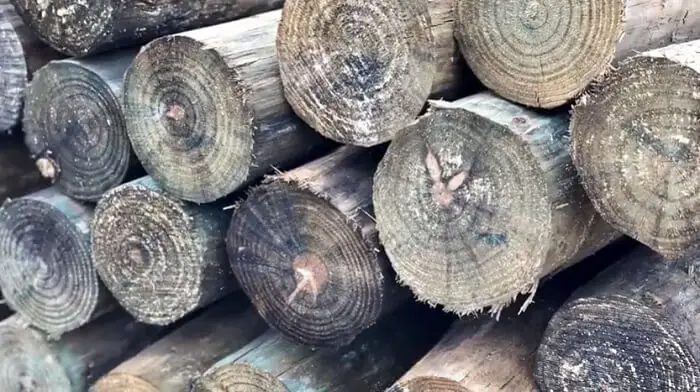
But those same chemicals can be released into the air when the wood is burned, posing a serious health risk to you and your family. So when it comes to fire pits, stick with good old-fashioned firewood.
Can You Use Charcoal in a Metal Fire Pit?
One popular question we receive is whether you can burn charcoal in a metal fire pit. The answer is yes, but there are a few things you should know before doing so.
Burning charcoal in a metal fire pit is a great way to create a more intense heat for cooking or warming up. It also can give your fire pit a more “smoky” flavor that some people enjoy. However, there are a few things to keep in mind when using charcoal in your fire pit.
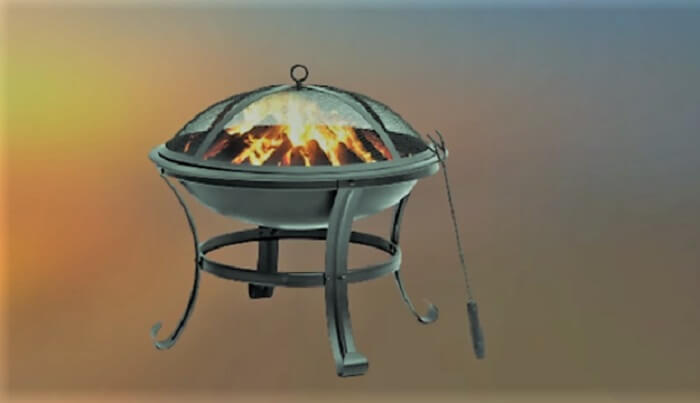
First, it’s important to use the proper type of charcoal. Briquettes are the best type to use, as they burn more evenly and produce less ash than other types of charcoal.
Second, you’ll need to build a good bed of hot coals before adding more charcoal. This can be done by igniting a small amount of charcoal in the bottom of the pit, then adding more as it burns down.
Third, be sure to keep an eye on the fire as it burns. Charcoal can create a lot of heat, so you’ll want to make sure the fire doesn’t get too out of control.
Can I Burn Paper in My Fire Pit?
If you’re planning a bonfire or fire pit party, you may be wondering what kind of materials you can safely burn. Paper is a common fuel for both indoor and outdoor fireplaces, but is it safe to burn paper in a fire pit?
The answer is yes, you can burn paper in a fire pit. Paper is a good fuel for fire pits because it burns quickly and produces a lot of heat. However, there are a few things to keep in mind when burning paper in a fire pit.
First, only use clean paper. Paper that is covered in dirt, grease, or other chemicals will produce more smoke and pollutants when burned.
Second, avoid burning paper that is printed with color ink. The ink can release harmful chemicals into the air when burned.
Finally, be sure to keep a close eye on the fire pit while the paper is burning. Paper can burn very quickly, so it’s important to make sure the fire doesn’t get out of control.
Overall, burning paper in a fire pit is a safe and easy way to get the fire going. Just be sure to use clean paper and keep a close eye on the fire.
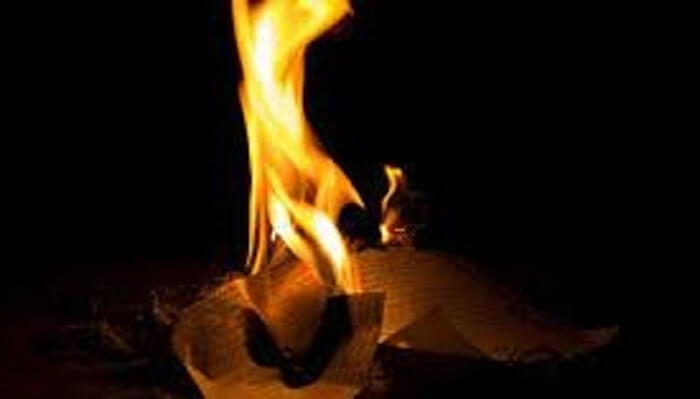
Starting a Fire Pit With Wood
No matter what type of fuel you use, it’s important to make sure that you use the proper amount. If you use too much fuel, you’ll end up with a fire that’s too big. If you use too little fuel, you won’t be able to get the fire going.
Once you’ve decided on the type of fuel you’re going to use, it’s time to start building your fire. The first step is to gather all of the materials you’ll need. This includes the fuel, some tinder, and some kindling.
Once you have all of the materials, it’s time to start building the fire. The first step is to create a foundation for the fire. This can be done by using some of the larger pieces of wood. Once you have a foundation, you can start adding the smaller pieces of wood.
As you add the smaller pieces of wood, it’s important to keep the fire going. You can do this by adding some of the tinder to the fire. The tinder will help to keep the fire going and it will also help to create a lot of heat.
Once the fire is going, you can start to add the wood. The wood will help to create a lot of heat and it will also help to keep the fire going. However, it’s important to make sure that you don’t add too much wood. If you add too much, you could end up putting the fire out.